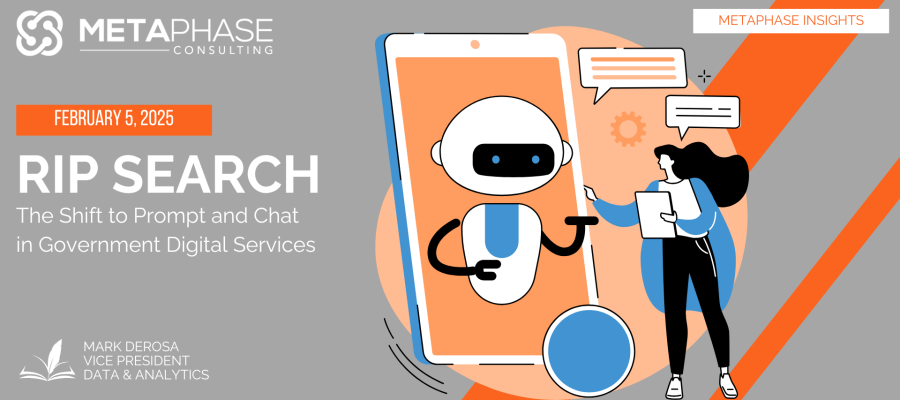
Search is dead. The future of government digital services is chat.
For decades, navigating government websites meant wrestling with clunky search features, keyword filtering, Boolean logic, and scrolling through endless pages of results to find the right form, policy, or service. Citizens and government employees alike have long struggled with traditional searches, often spending more time refining queries than finding answers. Now, AI-driven chat interfaces and natural language processing (NLP) are revolutionizing how users interact with systems, making prompt-based and conversational AI the new standard.
Unlike traditional keyword searches, AI-powered chat interfaces understand intent, context, and nuance, enabling users to ask questions in natural language and receive instant, relevant responses. Instead of typing “complete grant application” into a search bar and sifting through many results, users can now ask, “How do I apply for grants?” and receive a direct answer, complete with personalized steps based on their specific situation. AI shifts focus from syntax to semantics which increases usability and accuracy.
This shift is already happening. Federal agencies are deploying AI-powered virtual assistants, chatbots, and voice interfaces to streamline everything from benefits applications to IT service requests. The General Services Administration’s (GSA) AI-powered digital assistants help users navigate government services faster, while agencies like the IRS and Social Security Administration are piloting chat-driven customer support tools to handle routine inquiries—reducing call center backlogs and wait times that ultimately improve customer satisfaction.
Beyond public-facing services, prompt-driven AI is also transforming how government employees access internal knowledge bases and enterprise applications. Rather than searching for an obscure IT policy or procurement guideline, staff can simply ask an AI assistant for the latest version and receive a summary or direct link instantly. AI-powered chat reduces friction, eliminates guesswork, and ensures employees spend less time sifting through questionable results and more time taking action.
As this transition accelerates, agencies must rethink their approach to digital service delivery, accessibility, and governance. Chat-based interactions rely on large language models (LLMs) that must be trained on high-quality, up-to-date data. Agencies must also implement strong AI governance frameworks to prevent misinformation, bias, hallucinations, and security risks associated with AI-generated responses.
The days of cryptic keyword searches dominating government websites are coming to an end. The agencies that invest in AI-driven conversational interfaces today will be the ones that define the next generation of digital public services. Whether through chat, voice, or even multimodal AI interactions, the future of government services is no longer about searching—it’s about simply asking questions and receiving instant, intelligent, and relevant responses.

